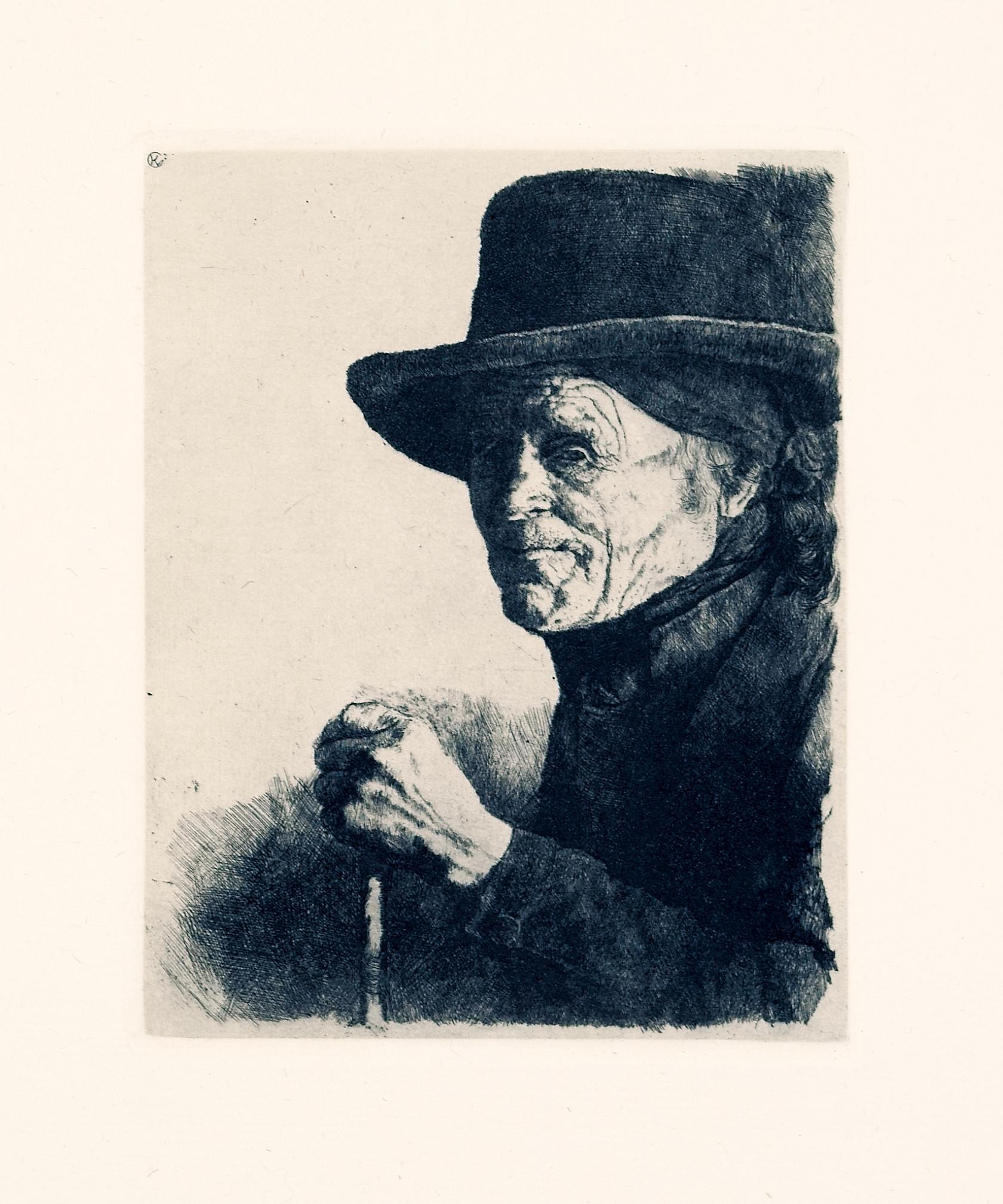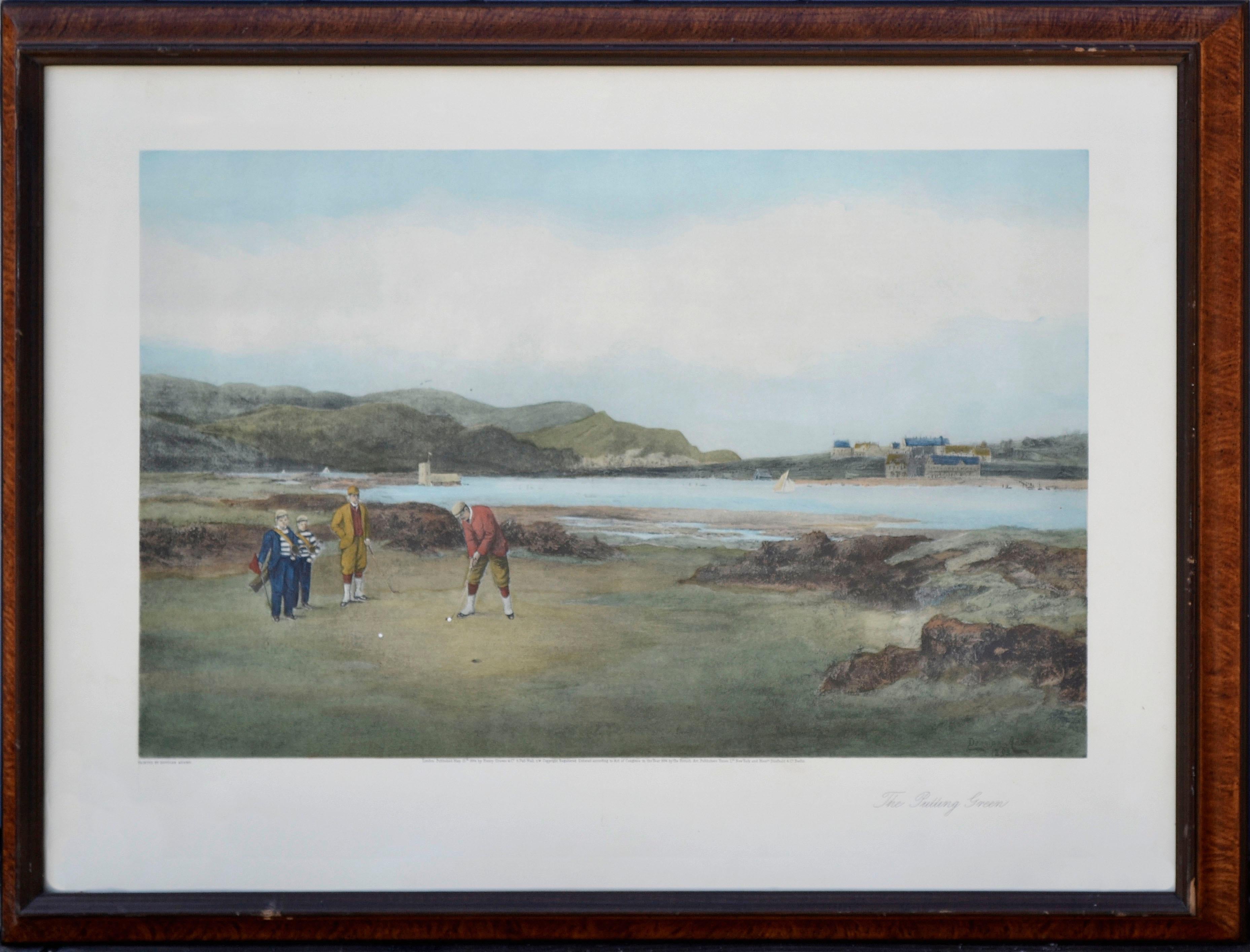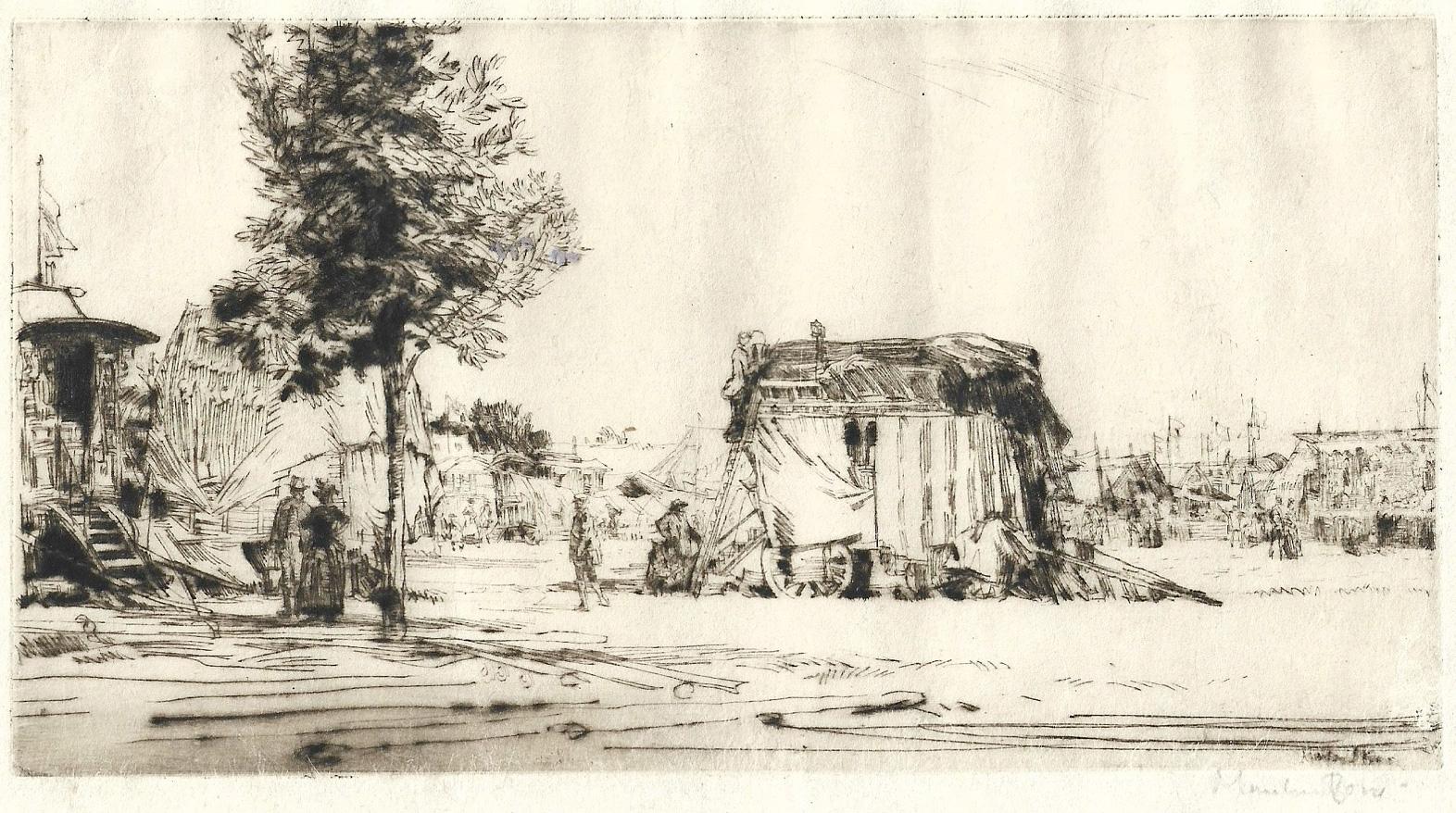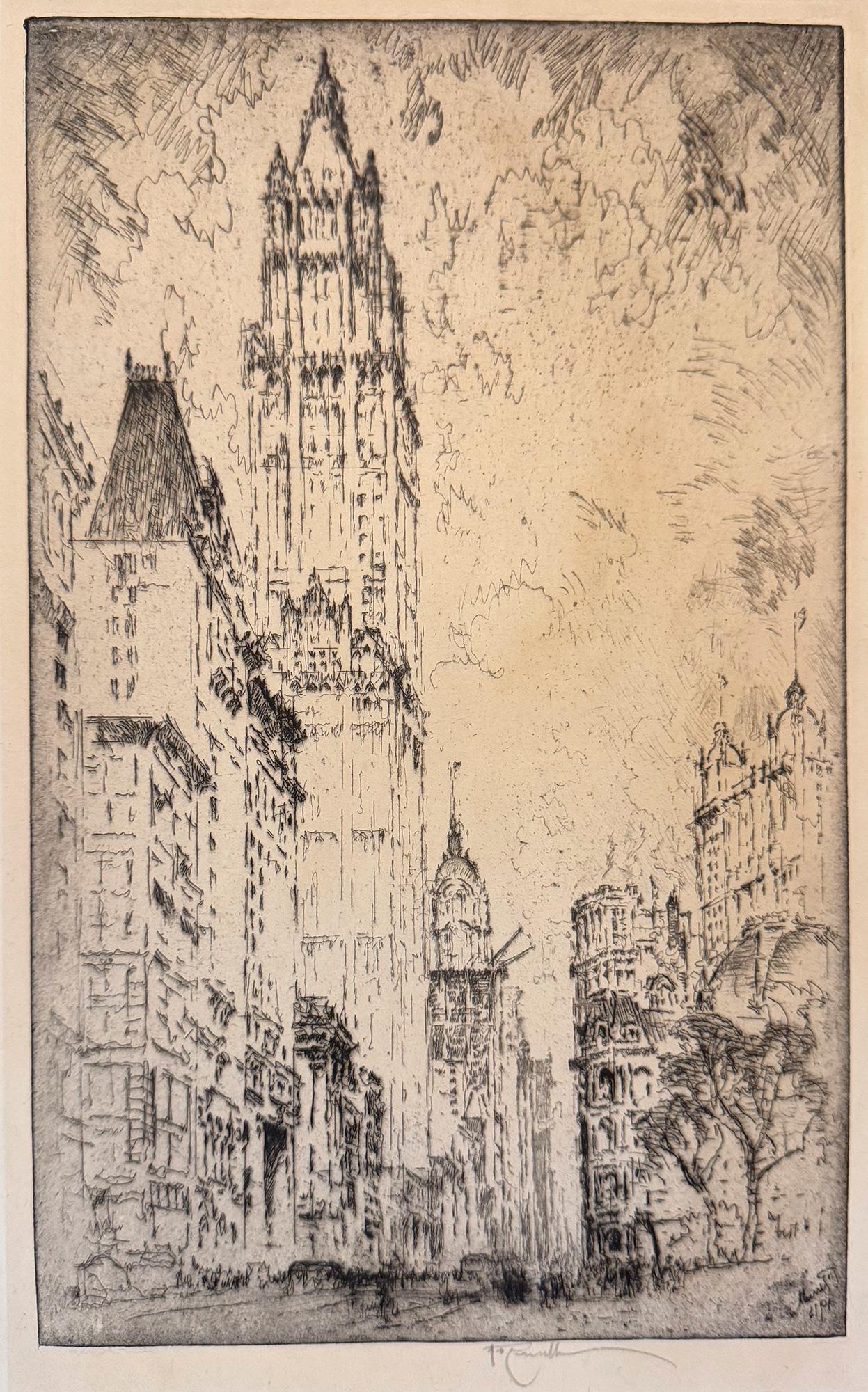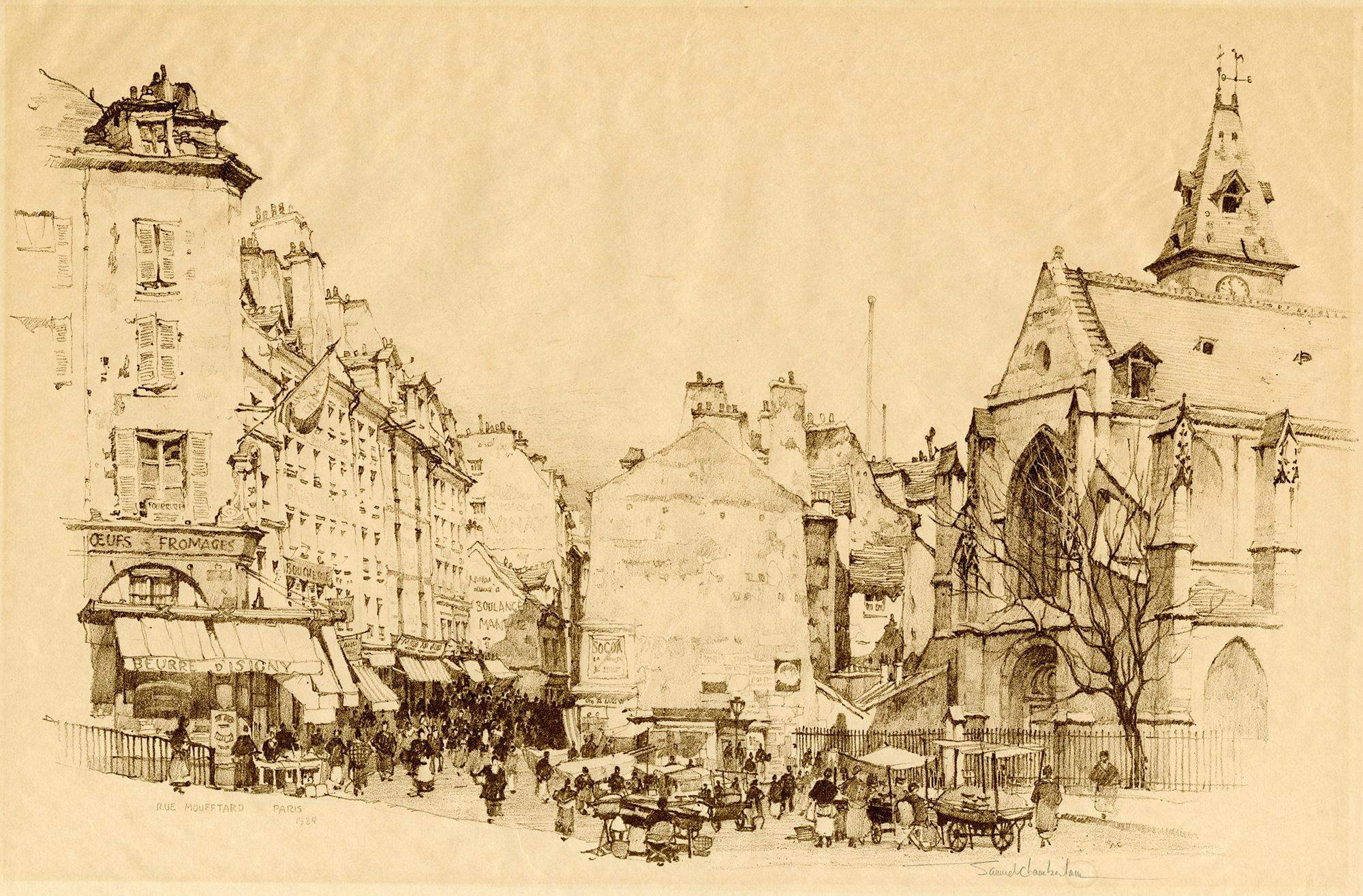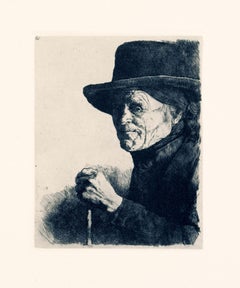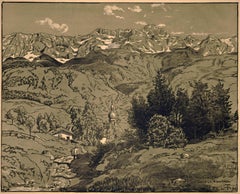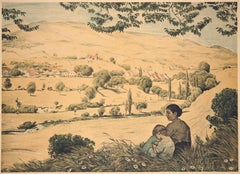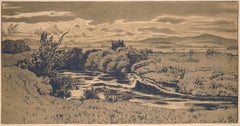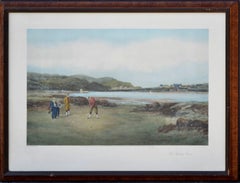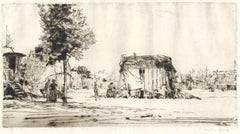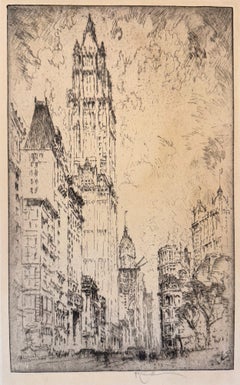Items Similar to Wadden spirits / - The imagination of the beach -
Want more images or videos?
Request additional images or videos from the seller
1 of 8
Otto EglauWadden spirits / - The imagination of the beach -1982
1982
$340.89
£253.34
€290
CA$468.13
A$526.97
CHF 278.83
MX$6,536.37
NOK 3,444.69
SEK 3,294.54
DKK 2,206.81
Shipping
Retrieving quote...The 1stDibs Promise:
Authenticity Guarantee,
Money-Back Guarantee,
24-Hour Cancellation
About the Item
Otto Eglau (1917 Berlin - 1988 Kampen), Wadden spirits, 1982. Aquatint etching, 14.5 cm x 18 cm (plate size), 32 cm x 33.8 cm (frame), signed “Eglau” and dated “[19]82” in pencil lower right, inscribed “Wattgeister” in the center and identified as no. 232 / 250 on the right. Attractively framed.
- Three minimal foxing spots in the white margin, otherwise in very good condition
- The imagination of the beach -
In this puzzle, ghostly faces intertwine with the mudflat landscape, which is interwoven with rivulets of water that enliven the entire sandy surface. Other faces emerge from these faces, creating a puzzle within a puzzle. These ghosts, each with their own character, transform the floor into a turbulent image, and the work also reflects on the art of "looking" into linear structures.
About the artist
After his release from captivity in 1947, Otto Eglau studied at the Hochschule für Bildende Künste in Berlin. He was a student of Oskar Nerlinger, Max Kaus and Wolf Hoffmann. From 1953 he taught free drawing for architects at the Technical University of Berlin. In the years that followed, Eglau undertook numerous study trips that took him to Scandinavia, the Arab world, the Far East and even Macau. During these travels he cultivated the technique of watercolour, which allowed him to work quickly in the open air, while retaining a strong painterly quality.
Scholarships enabled Eglau to stay in Japan from 1962 to 1963 and in Naples in 1970. From 1969 to 1976 Eglau was professor of etching at the International Summer Academy of Fine Arts in Salzburg. Between 1983 and 1988 Eglau worked simultaneously in his Berlin studio at Lietzensee, which had its own printing press, and in his studio in Kampen on the island of Sylt.
Otto Eglau's work has been shown in more than 100 solo exhibitions worldwide and in more than 120 group exhibitions.
"I love the vastness of the island. The mudflats off Kampen are my treasure trove; here I discover new shapes and colors every day. Without Sylt, I would be like a fish without water."
- Otto Eglau
Selected Bibliography
Hanns Theodor Flemming: Otto Eglau. Das graphische Werk, Flensburg 1966.
Heinrich Seemann (Einführung): Otto Eglau. Inselskizzen, Hamburg 1982.
Heinrich Seemann (Einführung): Otto Eglau. Japan, Nepal, Sylt. Aquarelle. Zeichen und Strukturen. Einführung von Heinrich Seemann, Hamburg 1986.
Otto Eglau: Watt-Tagebuch. Ausgewählte Aquarelle aus den Skizzenbüchern Otto Eglaus. Kampen 1996.
GERMAN VERSION
Otto Eglau (1917 Berlin - 1988 Kampen), Wattgeister, 1982. Aquatintaradierung, 14,5 cm x 18 cm (Plattengröße), 32 cm x 33,8 cm (Rahmen), unten rechts in Blei mit „Eglau“ signiert und auf „[19]82“ datiert, mittig als „Wattgeister“ bezeichnet und rechts als Nr. 232 / 250 ausgewiesen. Ansprechend gerahmt.
- drei minimale Stockflecke im weißen Rand, ansonsten in sehr gutem Zustand
- Die Imagination des Strandes -
Auf diesem Vexierbild formen sich aus der von Wasserrinnsalen durchflossenen Wattlandschaft ineinander verschlungene Geistergesichter, die die gesamte Sandfläche beleben. Dabei gehen aus den Gesichtern weitere Gesichter hervor, so dass die Gesichter ihrerseits zu Vexierbildern werden. Die Geister, die ganz unterschiedliche Charaktere aufweisen, verwandeln die Standfläche in ein turbulentes Flächenbild, womit das Werk zugleich eine Reflexion auf die Kunst ist, etwas in Liniengefüge ‚hineinzusehen‘.
zum Künstler
Nach seiner Entlassung aus der Kriegsgefangenschaft 1947 nahm Otto Eglau ein Studium an der Hochschule für Bildende Künste in Berlin auf. Dort war wer Schüler von Oskar Nerlinger, Max Kaus und Wolf Hoffmann. Ab 1953 unterrichtete er freies Zeichnen für Architekten an der Technischen Universität Berlin. In den Folgejahren unternahm Eglau zahlreiche Studienreisen, die ihn nach Skandinavien, in den arabischen Raum, nach Fernost und bis nach Macau führten. Auf diesen Fahrten kultivierte er die Technik des Aquarellierens, die eine zügige Bildschöpfung im Freiraum erlaubt und dennoch eine stark malerische Qualität aufweist.
Stipendien ermöglichten es Eglau, sich von 1962 bis 1963 in Japan aufzuhalten und 1970 länger in Neapel zu verweilen. Von 1969 bis 1976 hatte Eglau die Professur für Radierung an der Internationalen Sommerakademie für Bildende Kunst in Salzburg inne. Zwischen 1983 und 1988 war Eglau parallel in seinem Berliner Atelier am Lietzensee, das über eine eigene Grafikpresse verfügte, und seinem Atelier in Kampen auf Sylt tätig.
Otto Eglaus Werk wurde weltweit in über 100 Einzelausstellungen präsentiert und war darüber hinaus in mehr als 120 Gruppenausstellungen vertreten.
"Ich liebe die Weite der Insel. Das Watt vor Kampen ist meine Fundgrube, hier entdecke ich jeden Tag neue Formen und Farben. Ohne Sylt wäre ich wie ein Fisch ohne Wasser."
- Otto Eglau
Auswahlbibliographie
Hanns Theodor Flemming: Otto Eglau. Das graphische Werk, Flensburg 1966.
Heinrich Seemann (Einführung): Otto Eglau. Inselskizzen, Hamburg 1982.
Heinrich Seemann (Einführung): Otto Eglau. Japan, Nepal, Sylt. Aquarelle. Zeichen und Strukturen. Einführung von Heinrich Seemann, Hamburg 1986.
Otto Eglau: Watt-Tagebuch. Ausgewählte Aquarelle aus den Skizzenbüchern Otto Eglaus. Kampen 1996.

About the Seller
5.0
Gold Seller
Premium sellers maintaining a 4.3+ rating and 24-hour response times
Established in 2014
1stDibs seller since 2023
19 sales on 1stDibs
Typical response time: 6 hours
- ShippingRetrieving quote...Shipping from: Berlin, Germany
- Return Policy
Authenticity Guarantee
In the unlikely event there’s an issue with an item’s authenticity, contact us within 1 year for a full refund. DetailsMoney-Back Guarantee
If your item is not as described, is damaged in transit, or does not arrive, contact us within 7 days for a full refund. Details24-Hour Cancellation
You have a 24-hour grace period in which to reconsider your purchase, with no questions asked.Vetted Professional Sellers
Our world-class sellers must adhere to strict standards for service and quality, maintaining the integrity of our listings.Price-Match Guarantee
If you find that a seller listed the same item for a lower price elsewhere, we’ll match it.Trusted Global Delivery
Our best-in-class carrier network provides specialized shipping options worldwide, including custom delivery.More From This Seller
View AllWilhelm Leibl (1844-1900), Original Etchings, Kunstverlag Gurlitt, 1900
Located in Berlin, DE
Wilhelm Leibl (1844 Cologne - 1900 Würzburg), Linen portfolio by Kunstverlag Gurlitt with 11 (of 11) original etchings, 1900, copy no. 67 / 100, 49.8 cm x 32 cm (portfolio size), 43....
Category
Early 1900s Realist Figurative Prints
Materials
Paper
S. Anton Patenkirchen / - The Home of the Landscape -
Located in Berlin, DE
Hans Thoma (1839 Bernau - 1924 Karlsruhe), S. Anton Patenkirchen, 1895. Algraph on strong wove paper, published by Breitkopf und Härtel in Leipzig as ‘Zeitgenössisches Kunstblatt Nr....
Category
1890s Realist Figurative Prints
Materials
Paper
Southern German summer landscape / - The profile of the landscape -
Located in Berlin, DE
Hans Thoma (1839 Bernau - 1924 Karlsruhe), Southern German summer landscape, around 1897. Algraph on strong wove paper, published by Breitkopf und Härtel in Leipzig as ‘Zeitgenössisc...
Category
1890s Realist Figurative Prints
Materials
Paper
At the pond / - The longing of the landscape -
Located in Berlin, DE
Hans Thoma (1839 Bernau - 1924 Karlsruhe), At the pond, 1897. Algraph on strong wove paper, published by Breitkopf und Härtel in Leipzig as ‘Zeitgenössisches Kunstblatt Nr. 148’, 23....
Category
1890s Realist Figurative Prints
Materials
Paper
Boy at the source / - Elixir of Life -
Located in Berlin, DE
Hans Thoma (1839 Bernau - 1924 Karlsruhe), Boy at the source, 1897. Algraph on strong wove paper after a drawing from 1897, published by Breitkopf und Härtel in Leipzig as ‘Zeitgenös...
Category
1890s Realist Figurative Prints
Materials
Paper
Muse / - In the realm of the muses -
Located in Berlin, DE
Hans Thoma (1839 Bernau - 1924 Karlsruhe), Muse, 1893. Algraph on strong wove paper, published by Breitkopf und Härtel in Leipzig as ‘Zeitgenössisches Kunstblatt Nr. 174’, 43.5 cm x ...
Category
1890s Realist Figurative Prints
Materials
Paper
You May Also Like
"The Putting Green" - Figurative Landscape
By Douglas Adams
Located in Soquel, CA
"The Putting Green" - Figurative Landscape
20th century lithograph copy (restrike) of an original painting by British artist Douglas Adams (English, 185...
Category
1970s Realist Landscape Prints
Materials
Lithograph, Paper
$319 Sale Price
20% Off
William Hogarth . Original engravings 155 pсs., 1 piece with blend. 1822 London
By William Hogarth
Located in Riga, LV
William Hogarth (1697-1764)
Original engravings 155 pсs., 1 piece with blend. 1822 London
From A. Neibergs collection
Category
1820s Realist Figurative Prints
Materials
Paper, Engraving
Cambridge Midsummer Fair
By Sir Muirhead Bone
Located in Middletown, NY
A peaceful image by Britian's first official war artist.
Drypoint printed in brownish black ink on fibrous, laid Japon paper, 3 3/8 x 6 5/16 inches (85 x 161 mm), full margins. Sign...
Category
Early 20th Century Realist Landscape Prints
Materials
Handmade Paper, Drypoint
Woolworth Building, New York
By Paul Schumann
Located in Middletown, NY
A rich and tonal image of an icon of Manhattan architecture.
Etching with drypoint, 11 7/8 x 7 3/8 inches (300 x 186 mm), full margins. Edition of 100. Signed in pencil, lower right...
Category
Early 20th Century Realist Landscape Prints
Materials
Handmade Paper, Drypoint, Etching
Rue Moufftard, Paris
By Samuel Chamberlain
Located in Middletown, NY
Lithograph in brown ink on lightweight, cream laid Japon paper with a deckle edge, 10 3/4 x 17 inches (274 x 432 mm), full margins. Signed and numbered 9/35 in pencil in the lower ma...
Category
Early 20th Century Realist Landscape Prints
Materials
Handmade Paper, Lithograph
The Punt
By Rosamond Tudor
Located in Middletown, NY
A dynamic football image from the 1920s by a female artist known for her sports scenes.
Etching with drypoint on exceptionally fine laid Japon paper with a double watermark, 10 7/8 ...
Category
Early 20th Century Realist Landscape Prints
Materials
Handmade Paper, Drypoint, Etching
